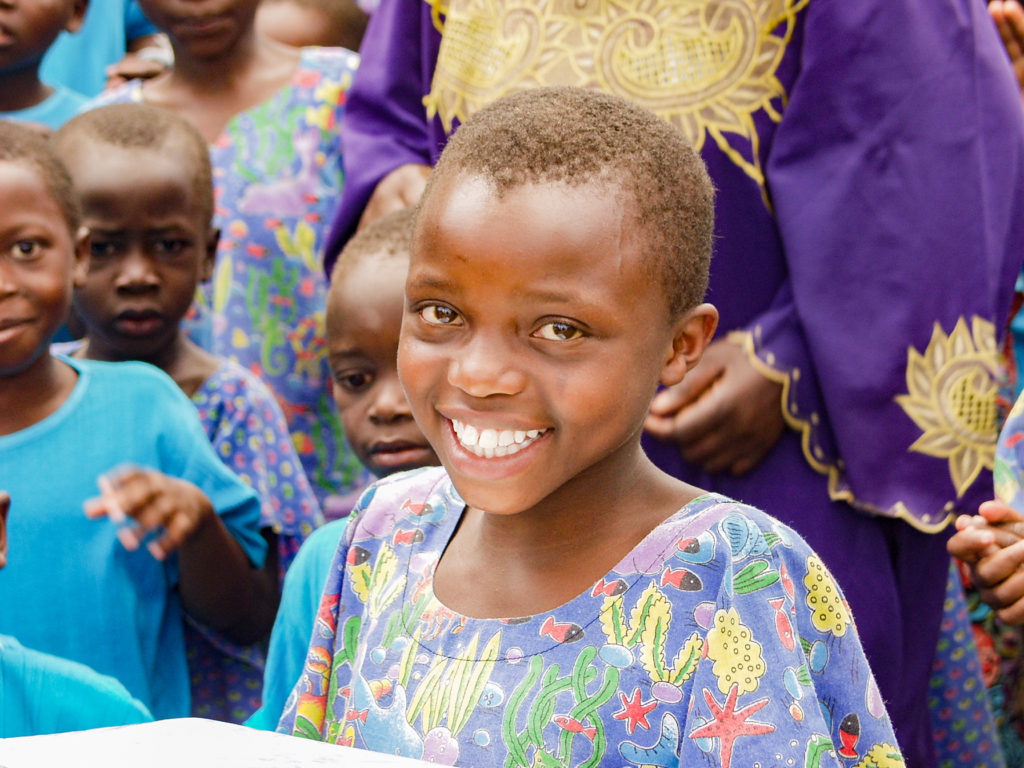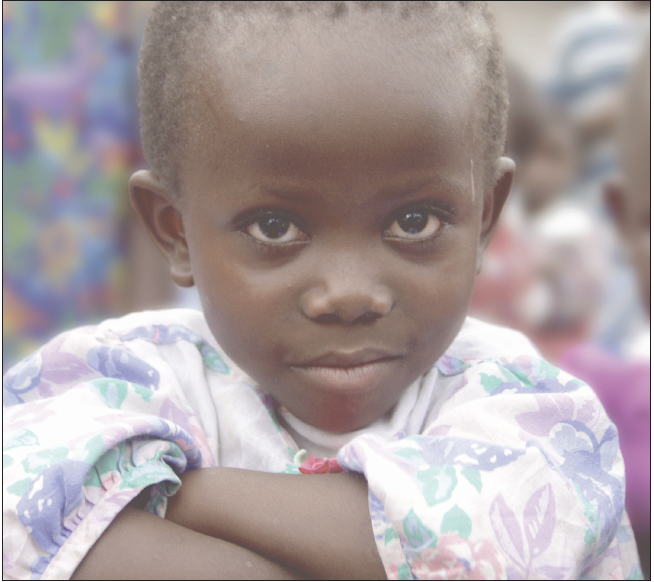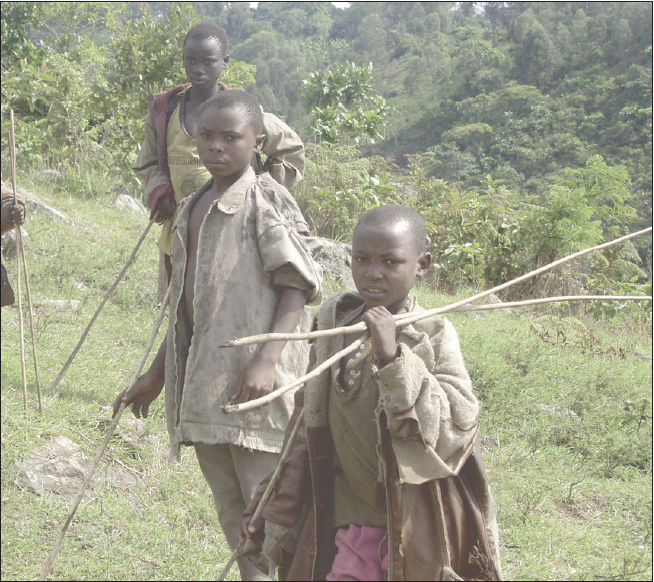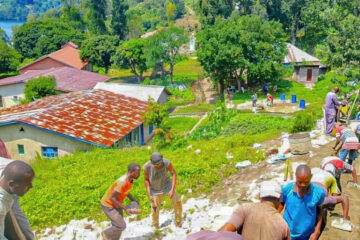Click the button to download a two-page flyer with Fast Facts about the D.R. Congo.
Thank you for making a difference in the lives of children!

- Population: 83,301,151
- Official Language: French
- Capital City: Kinshasa
Officially known as The Democratic Republic of the Congo. Over 20 African ethnic groups live here. The DRC encompasses 905,354 square miles. It is the third-largest country in Africa, yet has a coastline only 25 miles long.

People of D.R. Congo
The Bantu peoples constitute a large majority of the country’s population. They occupy more than two-thirds of the national territory. They entered the region of modern Congo during the 10th to the 14th century. The Bantu People came from the west and north. They established kingdoms that were flourishing at the time of European exploration after the 16th century. The Pygmies are considered the earliest inhabitants of the Congo basin.
Culture and Life Styles of D.R. Congo
Congo’s many ethnic groups and regions have developed a mosaic of traditional art. As a result, there is a large variety of art, which includes painting, sculpture, music, and dance. The cities, especially Kinshasa, are the greatest creators, propagators, and promoters of national cultural life and arts. Surviving national folk traditions are evident. This includes pottery and the weaving of raffia, ceremonial dress or costumes, dancing styles, and songs.
Traditional religion is also a part of the culture in D.R. Congo. This includes belief in a supreme being, the power of the ancestors, spirits of nature, and the efficacy of magic. After the introduction of Christianity, these beliefs began to change. Now, a sizable Christian population exists, including the local sect of the Church of Jesus Christ on Earth by the Prophet Simon Kimbangu (Kimbanguism).
In 1960, Congo inherited a difficult medical situation. The colonial administration had trained some highly qualified medical technicians and nurses. All the while, they confined medical practice to European doctors and missionaries. As a result, there grew to be a shortage of doctors. By the late 1970s, however, most of the doctors were Congolese. For the country’s first decade, experienced medical assistants, technicians, and nurses filled the vacuum left by the shortage of doctors. For example, by 1990 there was a meager one doctor for every 15,500 persons.
The country, despite great efforts in the 1970s and ‘80s, suffered from ever-declining health care standards. This is because of the protracted civil war in the 1990s. By the end of the century, diseases such as AIDS, sleeping sickness, and various types of hemorrhagic fever went largely unchecked, often at epidemic levels.
Education in D.R. Congo
Recently, independent public authorities have recognized the value of education and have given it greater attention. This is no surprise because the budget for the Ministry of Education has always been ahead of that of the other sectors of national life. Primary education is compulsory, although it is difficult for a developing nation to meet this pledge. This is because there is a lack of facilities and an inadequate number of teachers.

Housing in D.R. Congo
In general, individuals build their own houses according to their needs and means.
Economy in D.R. Congo
The country’s main economic resource is its mineral deposits. For example, there are minerals such as copper, cobalt, zinc, cassiterite, manganese, coal, silver, cadmium, germanium, gold, palladium, and platinum, iron ore, and offshore deposits of petroleum.
The limestone deposits that occur in this country are considered to be among the richest in Africa. Rich deposits of both industrial and gem-quality diamonds occur in the Congo. The Congo is a leading producer of industrial diamonds. Mining produces more than half of the national budget and more than 80 percent of total exports.
Domestic agriculture is the main source of food supply and cash income for the majority of the population. Because of the deterioration of the transportation network, as well as agricultural services during the forming of this country, a collapse of market production took place. Now, coffee is the chief agricultural export.
The organization of the transportation network is of the most crucial importance to Congo. The country’s generally poor transportation infrastructure is a major factor in the underdevelopment and stagnation of the county.

Government in D.R. Congo
The constitution of 1978 was the Congo’s (then Zaire) fifth since independence in 1960. Trends apparent in these successive documents included the institution of an increasingly centralized presidential form of government. In addition to this, the exclusion of political activity was not sanctioned by the then-ruling Popular Movement of the Revolution (Mouvement Populaire de la Révolution; MPR). The MPR long was the sole legal political party. The president, assisted by the Political Bureau, composed only of individuals appointed by the president, presided over this.
The country is divided into 10 provinces, including the Ville (equivalent to a federal district) of Kinshasa. The provinces are presided over by commissioners. In addition to that, cities are divided into zones and zones into quartiers, headed, respectively, by commissaires sous-régionaux, or mayors, commissaires des zones, and chefs de quartiers. The mayor of Kinshasa is called commissaire urbain.
The judicial system is headed by the Supreme Court, which is located in Kinshasa. Included in this are nine Courts of Appeal, and a tribunal of First Instance is located in most subregional capitals. In addition to that, the village customs are not completely abolished, and villagers may settle some cases according to traditional procedures. Congo does not apply the jury system; the judges, after deliberation, have the right to settle cases.
How You Can Help
The mission of International Children’s Care is to bring hope and the gift of a new life to the orphaned and abandoned children of Congo. Through sponsorships, donations, and volunteer service, you can give these children the chance in life that they so richly deserve.


